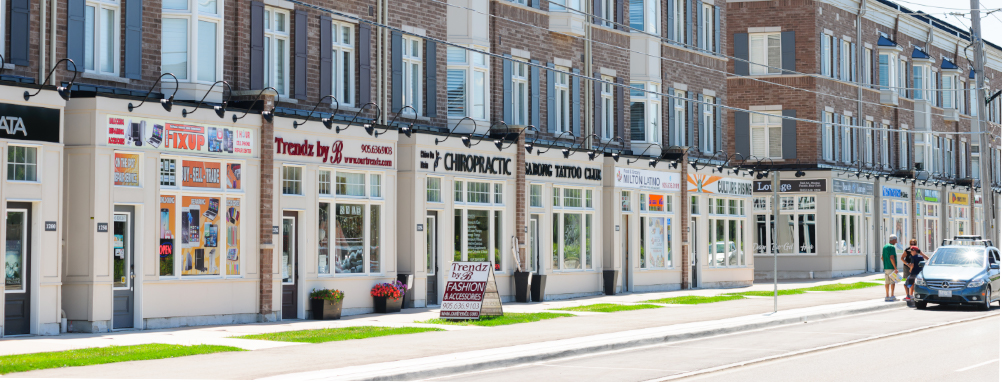A strategy for growth
Milton continues to be one of the fastest growing communities in Canada. Through the provincial A Place to Grow plan, Milton is expected to have a population of 335,000 by the year 2051.
This growth will happen. For that reason, Council has directed Town staff to make sure planning is deliberate and purposeful. Planning involves making sure that development happens in the right places and takes into account environmental factors and the Town’s finances. Our growth strategy focuses on:
-
Preserving prime agricultural land and natural heritage areas
-
Making sure our future and planned neighbourhoods include compact community designs, with a variety of housing options
-
Creating walkable neighbourhoods with public transit hubs that are pedestrian and cyclist-friendly
-
Meeting market demand for traditional and mixed-use employment land in the right places
We are working towards building a Milton with no urban sprawl, where residents can live, work and play. This is why we are committed to building a complete community.
Milton's Growth Story
Milton’s desire is to be a progressive, vibrant and thriving complete community. Check out the video below to see how Milton is planning for what we want our shared future to be, A Place of Possibility.
To view the individual segments, please visit Milton's Growth Story page.
Myth or fact
Urban boundary expansion |
MythThrough an urban boundary expansion, Milton will develop over farmland and natural heritage areas. FactThere is no contemplation of development in Milton’s north and west lands, which are 71% of Milton’s entire land base. Milton’s Growth Plan looks at development in the south and east where Regional infrastructure (water and wastewater) exists. This development is seven per cent of Milton’s entire land base. Managing growth through intensification that protects the Greenbelt, Farmland and Natural Heritage areas, reduces impacts to the environment. |
Employment lands |
MythMilton has enough employment lands and does not need to expand for more. FactBy 2025/2026, the Derry Green employment area will be nearly built out. Land for large-scale industrial development is needed and must be planned and located appropriately. Meeting market demand and anticipating future demand is a factor in any long-term planning. Expansion of the urban boundary that includes sufficient employment lands is critical to:
Revenues from this development are required for new and upgraded infrastructure across Halton Region and in Milton. |
Negative impacts on the environment |
MythExpanding the urban boundary negatively impacts the environment (Green House Gas emissions and environmental sustainability). FactMilton’s Growth Plan strategically and sustainably directs responsible residential and employment uses to the right locations. The plan will create walkable mixed-use communities, increase active transportation and transit usage while decreasing vehicular use and carbon emissions. |
Protecting future generations |
MythThe urban boundary should not be expanded any further than it currently is to protect future generations. FactImplementing a hard urban boundary disrupts Milton’s vision of compatible, complementary and complete communities. Restricting non-residential development will:
|
Urban sprawl |
MythMilton’s current and planned growth is resulting in urban sprawl. FactUrban sprawl occurs when there is little or no planning creating single-use zoning and conflicting land uses. Milton’s Growth Plan strategically manages anticipated growth, phased appropriately and prevents urban sprawl from now until 2051 with the development of mixed use, complete communities. Comprehensively planned development is not urban sprawl. |
Land conversion |
MythMilton does not need to convert its employments lands and can build within its existing land designation. FactMilton’s Growth Strategy is focused on intensification of its existing employment areas. However, Milton requires the conversion of employment lands to enable the creation of mixed use, walkable, work-live-play communities. In Milton there is demand for both traditional industrial development and mixed use employment.
|
Milton's growth plan
Milton’s growth plan strategically and sustainably creates compact, complete, mixed use communities with a full range of intensified residential, employment and retail in the right locations. Milton’s Greenbelt and farmlands are protected now until 2051 from development and urban development.
We invite you to learn more about how Milton is planning for growth in specific areas through our growth studies and plans.
Contact Us




